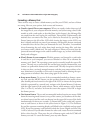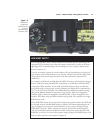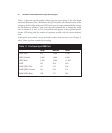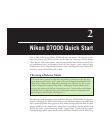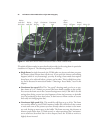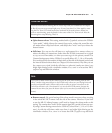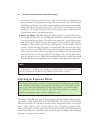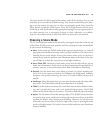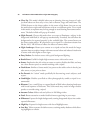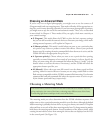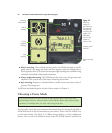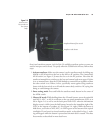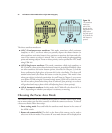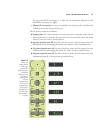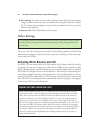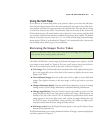■ Close Up. This mode is helpful when you are shooting close-up pictures of a sub-
ject from about one foot away or less, such as flowers, bugs, and small items. The
D7000 focuses on the closest subject in the center of the frame, but you can use
the multi selector right and left buttons to focus on a different point. Use a tripod
in this mode, as exposures may be long enough to cause blurring from camera move-
ment. The built-in flash will pop up if needed.
■ Night Portrait. Choose this mode when you want to illuminate a subject in the
foreground with flash (it will pop up automatically, if needed), but still allow the
background to be exposed properly by the available light. The camera focuses on
the closest main subject. Be prepared to use a tripod or a vibration-resistant lens
like the 18-55 VR kit lens to reduce the effects of camera shake.
■ Night Landscape. Mount your camera on a tripod and use this mode for longer
exposure times to produce images with more natural colors and reduced visual noise
in scenes with street lights or neon signs.
■ Party/Indoor. For indoor scenes with typical background lighting.
■ Beach/Snow. Useful for bright high-contrast scenes with sand or snow.
■ Sunset. Emphasizes the rich colors at sunset or sunrise, disables the flash, and may
use a slow shutter speed, so consider working with a tripod.
■ Dusk/dawn. Similar to Sunset mode, but preserves the subtle colors in the sky just
after sunset, or just prior to dawn.
■ Pet Portrait. An “action” mode specifically for fast-moving, erratic subjects, such
as pets.
■ Candlelight. Disables your flash to allow photographs by candle; a tripod is rec-
ommended.
■ Blossom. Uses a small f/stop to expand depth-of-field when shooting landscapes
with broad expanses of blossoms. This Scene mode may result in longer shutter
speeds, so consider using a tripod.
■ Autumn Colors. Makes reds and yellows in Fall foliage richer.
■ Food. Boosts saturation to make food look more appetizing in your snaps.
■ Silhouette. Exposes for bright backgrounds, turning foreground objects into under-
exposed silhouettes.
■ High Key. Exposes for bright scenes with lots of highlight areas.
■ Low Key. Tailors exposure for darker scenes, retaining murky shadows while allow-
ing highlights to remain.
David Busch’s Nikon D7000 Guide to Digital SLR Photography30



